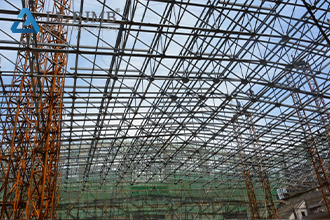Space frame structure and reinforced concrete structure have their own advantages and disadvantages in earthquake resistance.

The space frame structure has a better bearing power and seismic effect, can effectively resist the impact of natural disasters such as earthquakes, can ensure the safety of plant equipment and production continuity. And the node connection of the grid structure has good flexibility and toughness, which can absorb large energy under the action of earthquake and consume the energy of earthquake through its own deformation, thus reducing the impact of earthquake on the structure.
And although the reinforced concrete structure also has better seismic performance, there may be some disadvantages in some cases due to the characteristics of its material properties and structural form. For example, the stiffness of reinforced concrete structures is large, which is prone to generate large inertial forces under the action of earthquakes, thus leading to structural damage. In addition, the damping ratio of reinforced concrete structures is relatively small, which cannot effectively absorb and consume seismic energy and is prone to large vibration and deformation.
Overall, both space frame structures and reinforced concrete structures have their own advantages and limitations in terms of earthquake resistance. The specific choice of which structural form needs to be considered comprehensively according to engineering requirements, geological conditions, environmental factors, and economic and technical feasibility.











 About Us
About Us 2024-03-18
2024-03-18


